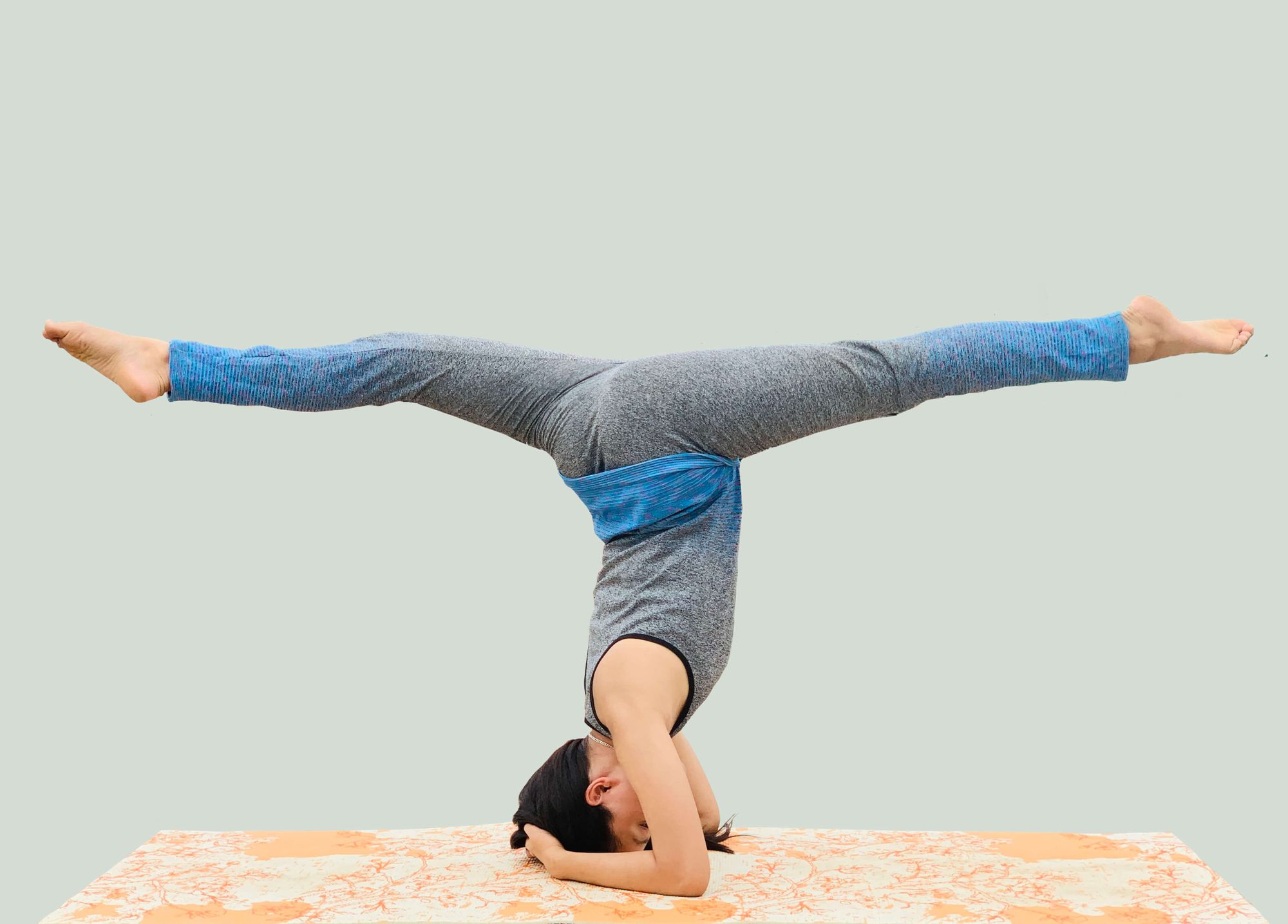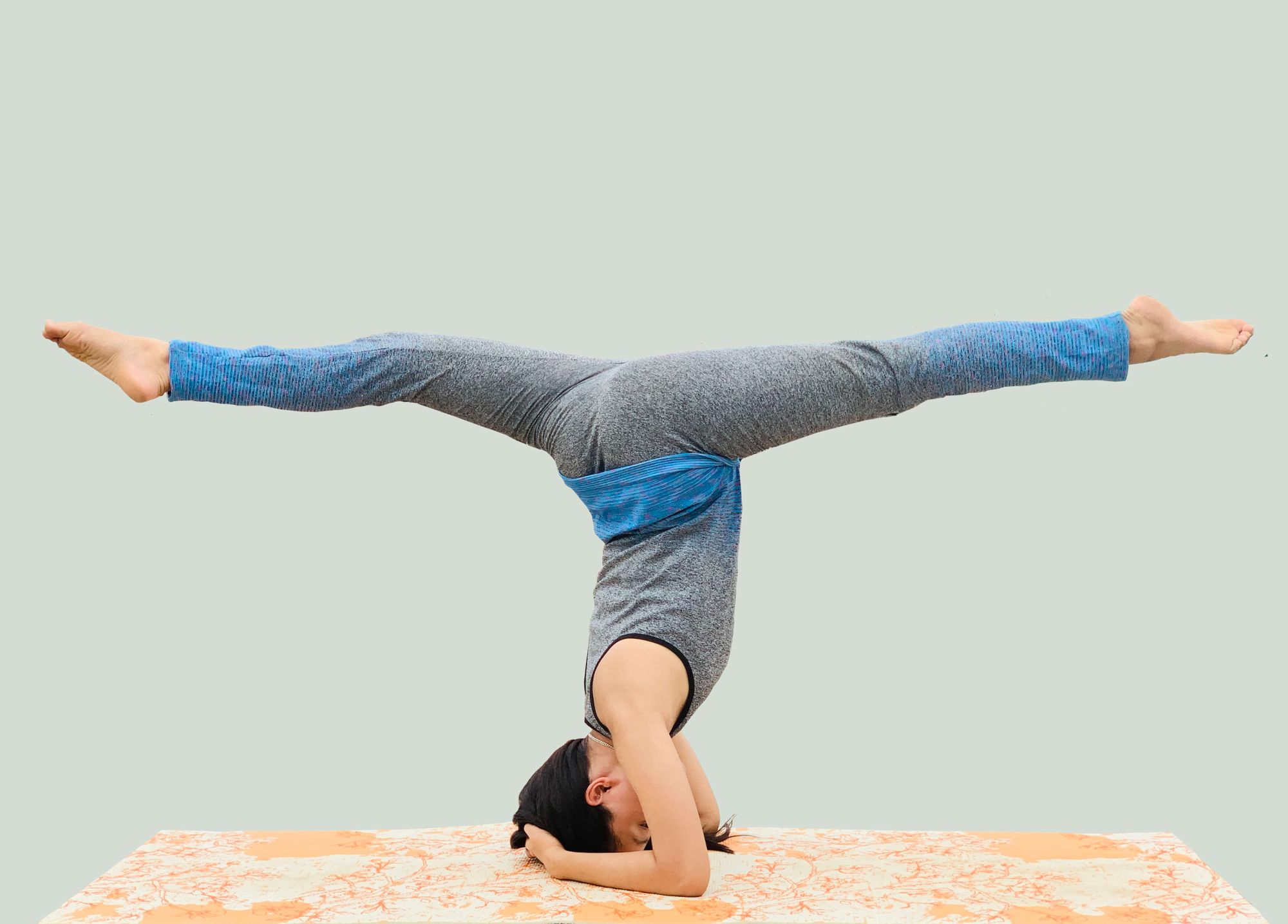Headstand: Headstand is an inverted yoga pose where you balance on your head with the help of arms making a straight line.Headstand aka sirsasana is known as the "king" of yoga poses because of its numerous benefits to the body as well as mind. It is practiced in yoga, acrobatics, beginner gymnastics, etc.
Preparatory Poses for Headstand
Headstand is an advanced pose which not only demands for core strength but also a proper control of your body. So, prepare for headstand by practicing the following poses;
Plank
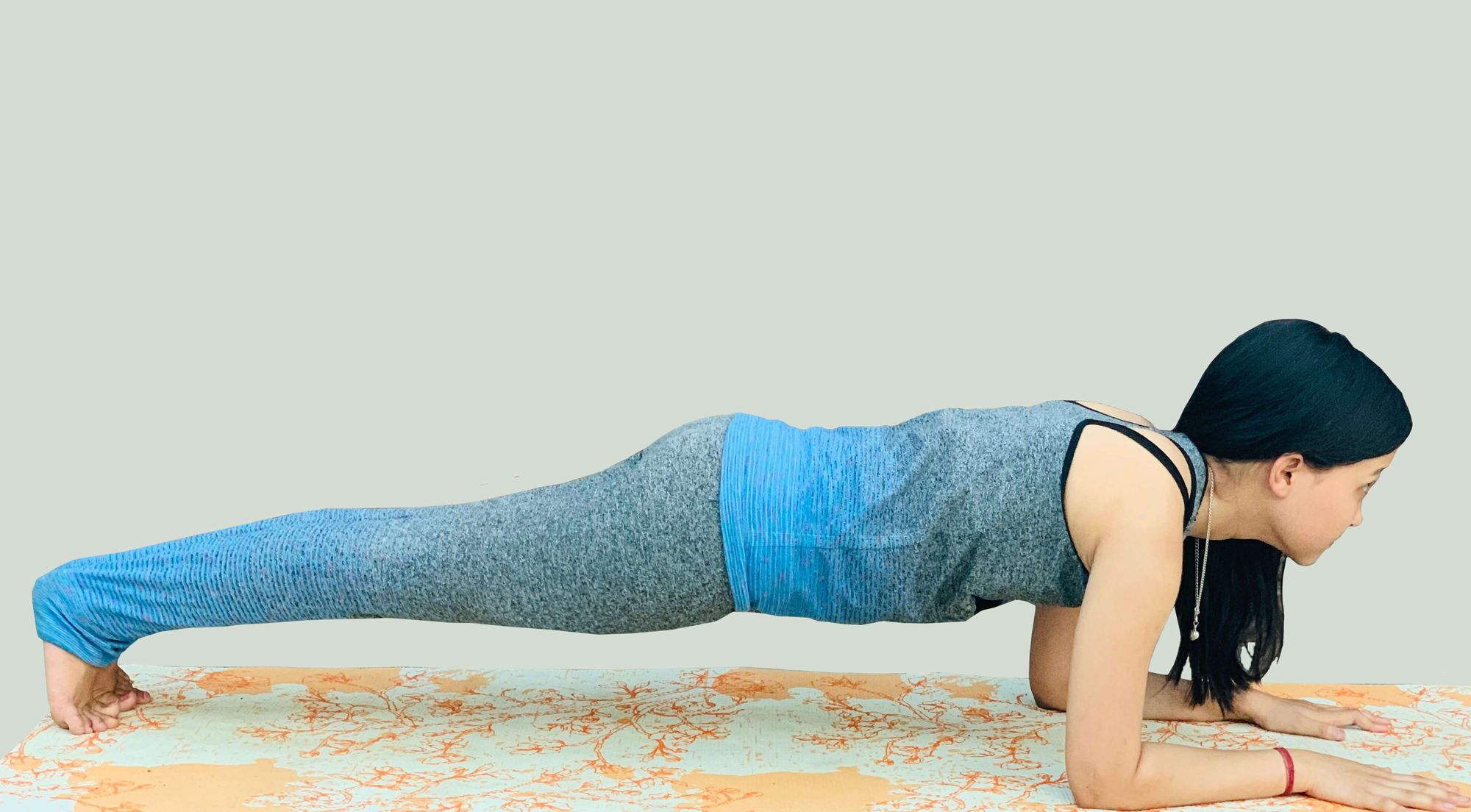
How it helps to do Headstand:
By strengthening core and arms and improving balance.
Tips/Modifications:
- If you feel difficult to balance with your toes try balancing with knees.
- Use a ball or chair as prop and place your hands on it while doing plank.
Contraindications: Pelvic pain, weak pelvic floor muscle, prolapse surgery and pregnancy.
Dolphin Pose

How it helps to do Headstand:
By stretching and strengthening arms, legs and shoulders.
Tips/ Modifications:
- Place a yoga block or cushion on your head if you feel more pressure on the head.
- Use blanket if you need to support your elbows.
- Place your foot on a wheel or block to raise the height of the heels, this will help you to straighten your legs easily.
- Bend the knees rather than straightening it forcefully.
Contraindications: Injury at shoulders and neck.
Downward Dog
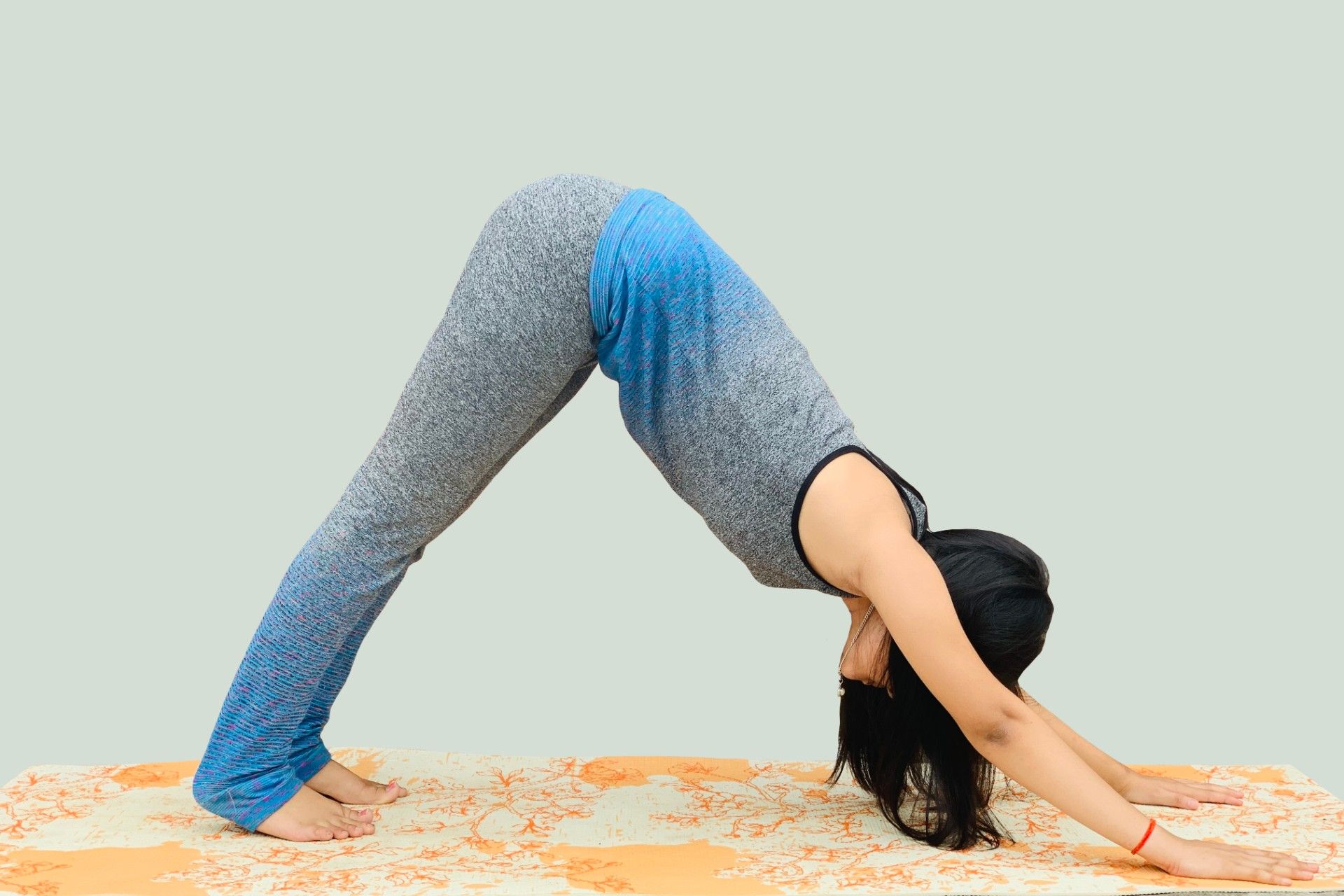
How it helps to do Headstand:
By strengthening the arms, shoulders and core.
Tips/Modifications:
- Bend your knees if you experience pain while straightening them.
- Place your feet on yoga wheel or blocks to raise it.
- Support the wrist or head with the help of yoga blocks or blanket.
Contraindications: Pregnancy, diarrhea, high blood pressure, heart disease and slip disc.
Standing wide legged forward fold
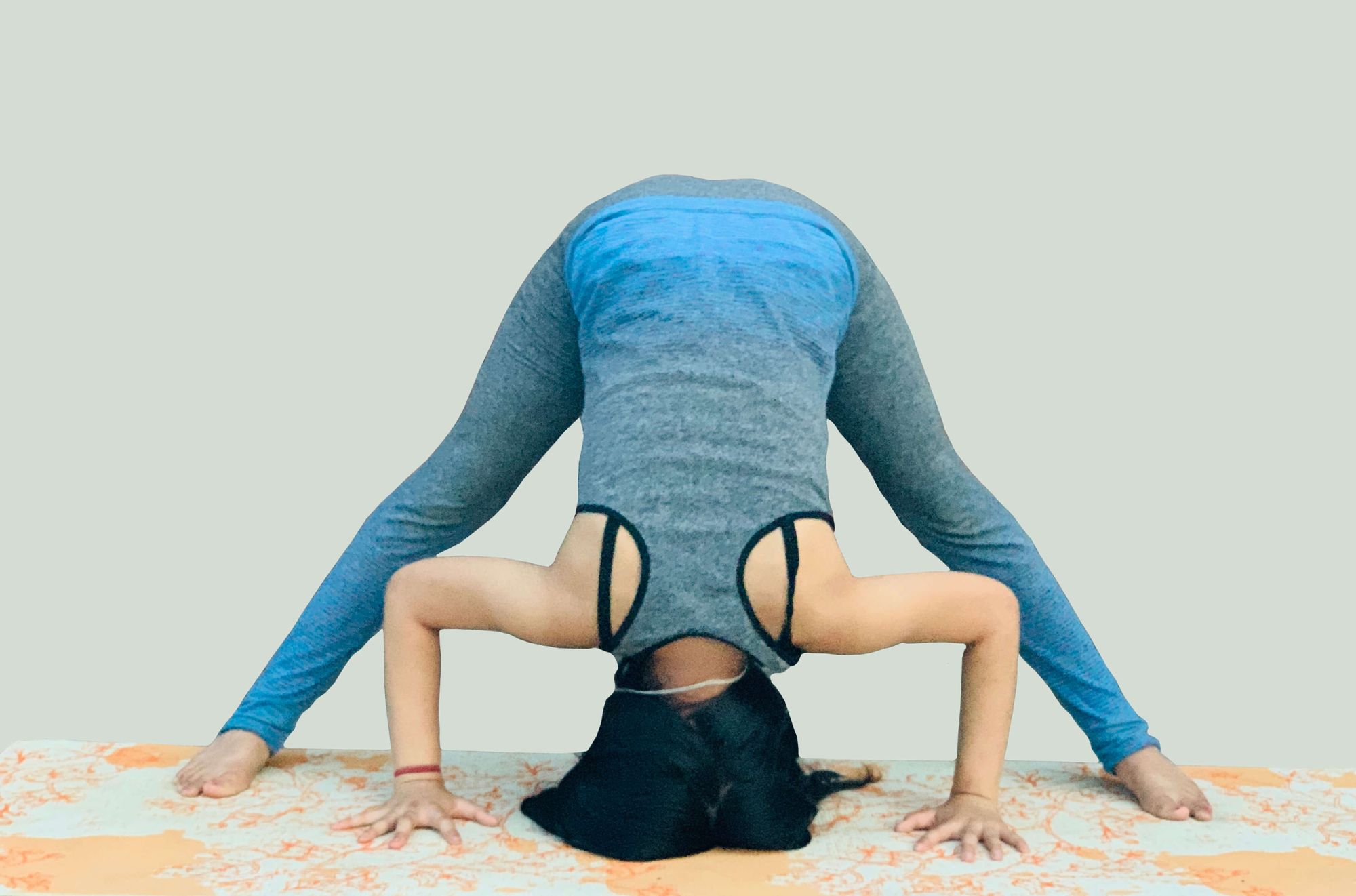
How it helps to do Headstand:
By stretching the shoulders, wrists and forearms.
Tips/Modifications:
- If you are unable to place your hands directly on the floor, place your hands on block.
- Bend your knees if your hamstring is not flexible.
Contraindications: Injury at legs, hips, back or shoulders and lower back problem
Shoulder Stand
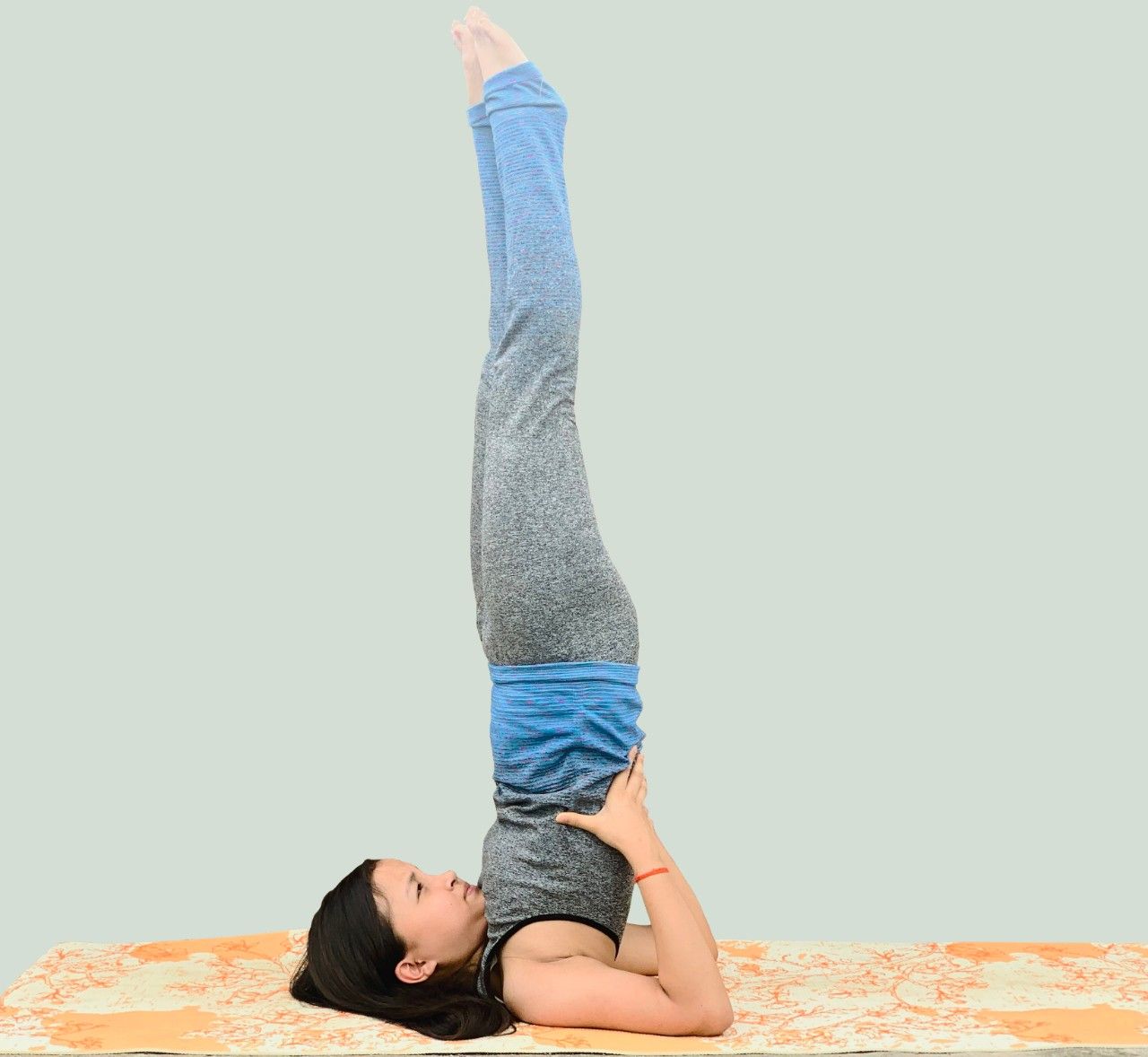
How it helps to do Headstand:
By opening the shoulders and strengthening the legs and arms.
Modifications:
- If you feel tension on your neck place a blanket below it.
- Use the wall for support or balance.
- If you can't raise your hips yourself, place your hips on a chair.
- You can practice suppported shoulder stand if you are a beginner.
Contraindications: Injury at shoulders and neck, diarrhea, headache, high blood pressure, pregnancy, menstruation and heart problems.
Steps to do Headstand
Step 1: Start with a seated position.

Step 2: Lean forward and place your elbows on the ground and clasp your hands together .

Step 3: Place the crown of your head in your hands.

Step 4: Lift your tailbone up and walk your legs in.

Step 5: Tuck one knee into the chest.

Step 6: Tuck another knee as well.

Step 7: If you are stable, lift up your legs and try to straighten them and if not repeat the above step until you find balance.

Note: Keep breathing normally and do not hold this pose for more than 30 sec if you are a beginner. Rest in child pose and breath properly after you exit from headstand.
Benefits of Headstand:
- Relieves stress
- Increases focus
- Strengthens shoulders and arms
- Improves digestion
- Strengthens core muscles
- Prevents hairfall
- Improves mental health
- Improves eye sight
- Prevents headache and migraine
- Treats thyroid
- Boosts blood flow
Contraindications:
- Back injury
- Neck injury
- High blood pressure
- Heart disease
- Pregnancy
- Menstruation
- Eye problems
Tips/Modifications:
- Try doing the above steps with the support of wall if it's your first time or until you find balance.
- Don't lift up both of your legs at the same time, work on lifting one leg at a time and lift another leg only after you find balance.
- You can also lift up one of your legs and balance using a yoga wheel.
- If you feel pain on arms or head, place thick mat or blankets below it.
Some Variations of Headstand
Straight Leg Headstand
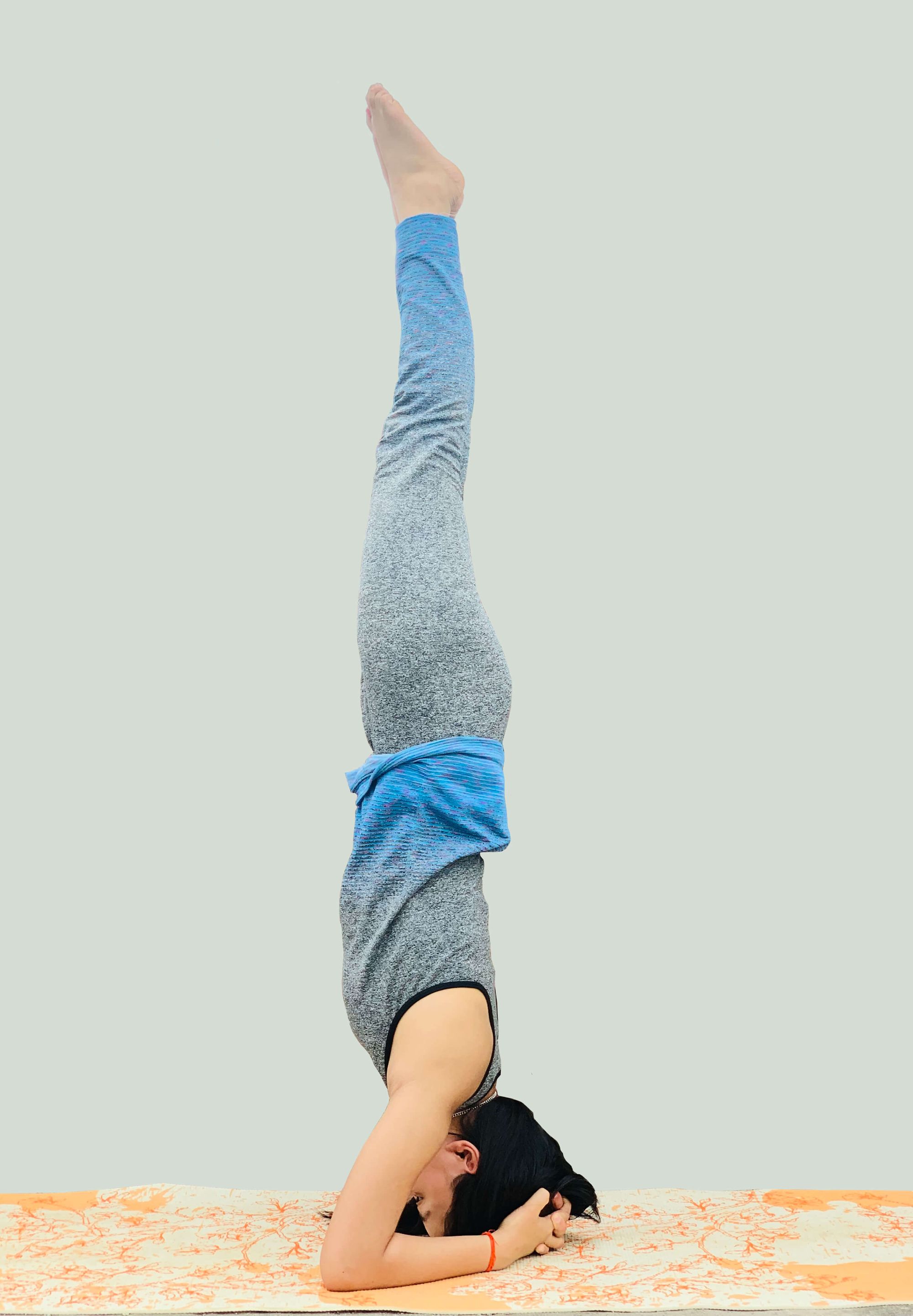
Upward Facing Staff Pose
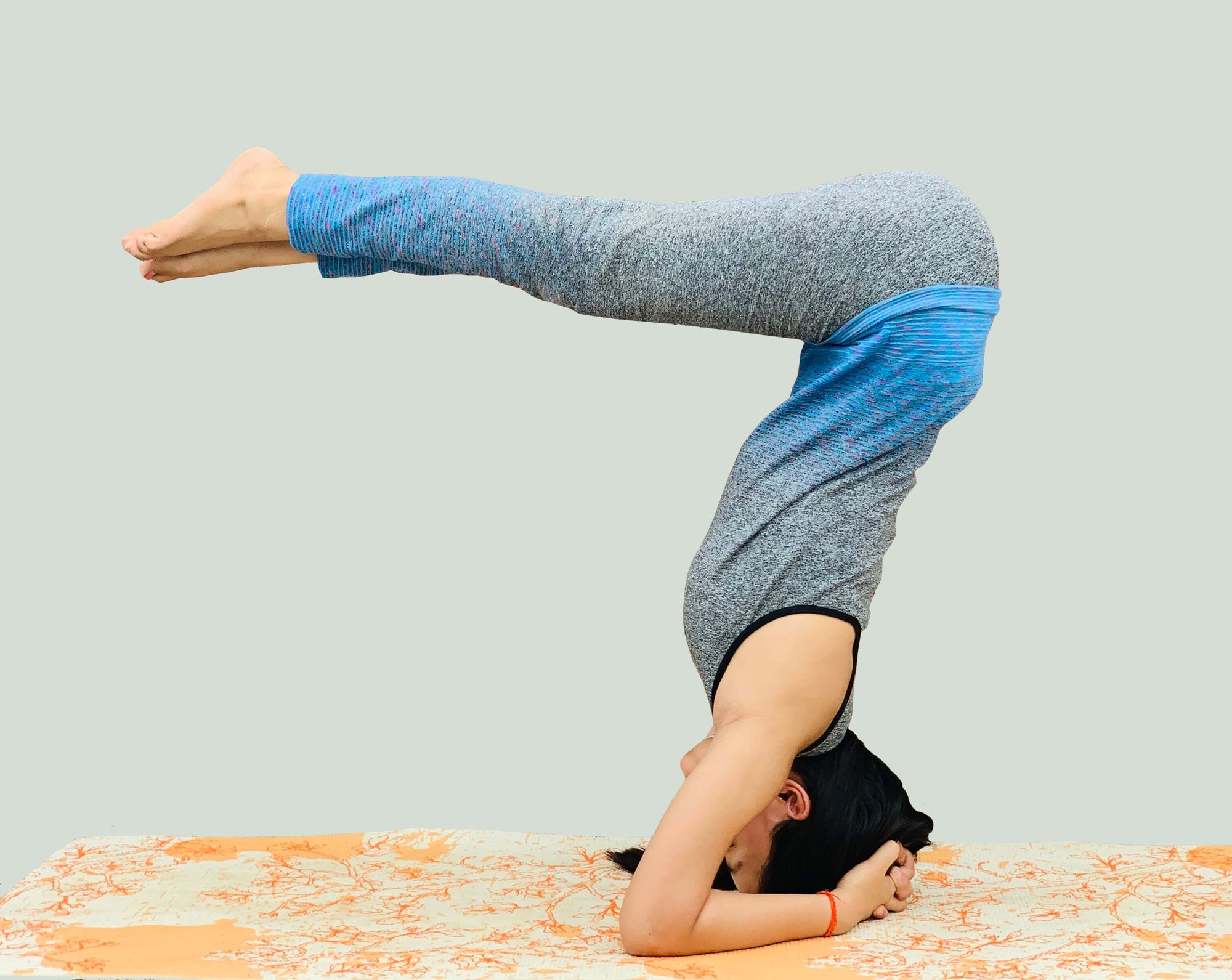
Squeezing Pose
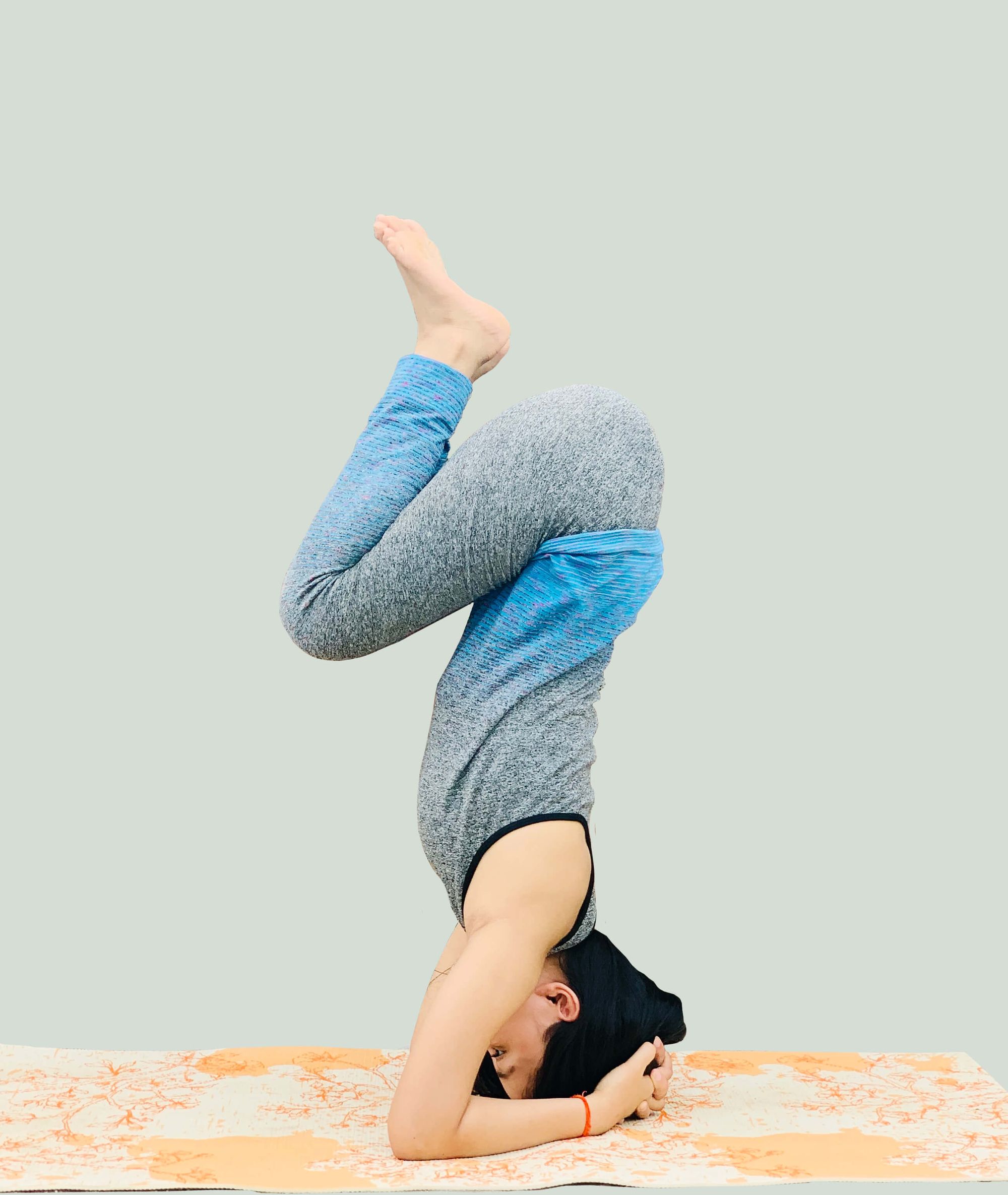
Headstand with Eagle Leg
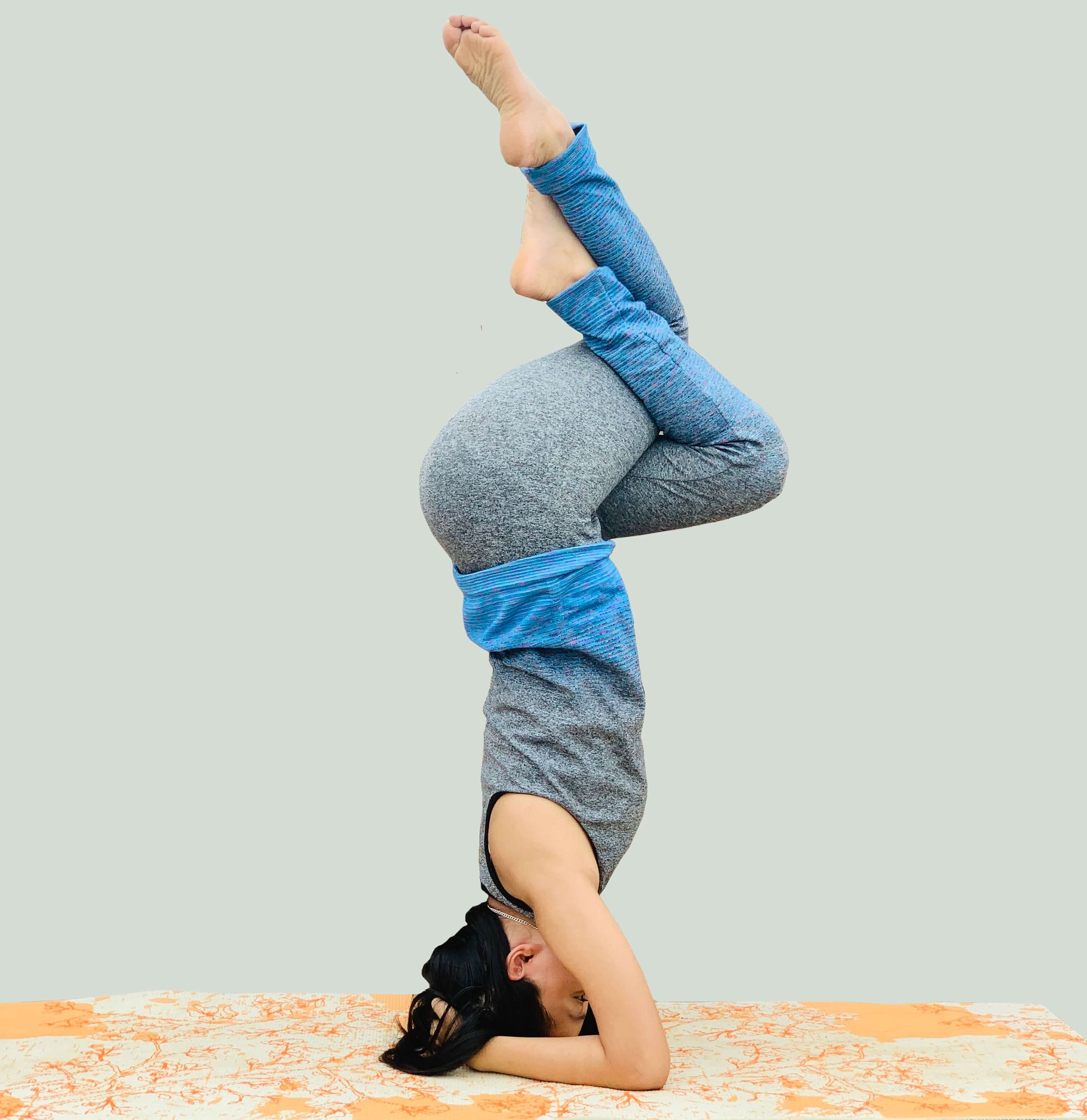
Headstand with Butterfly Legs
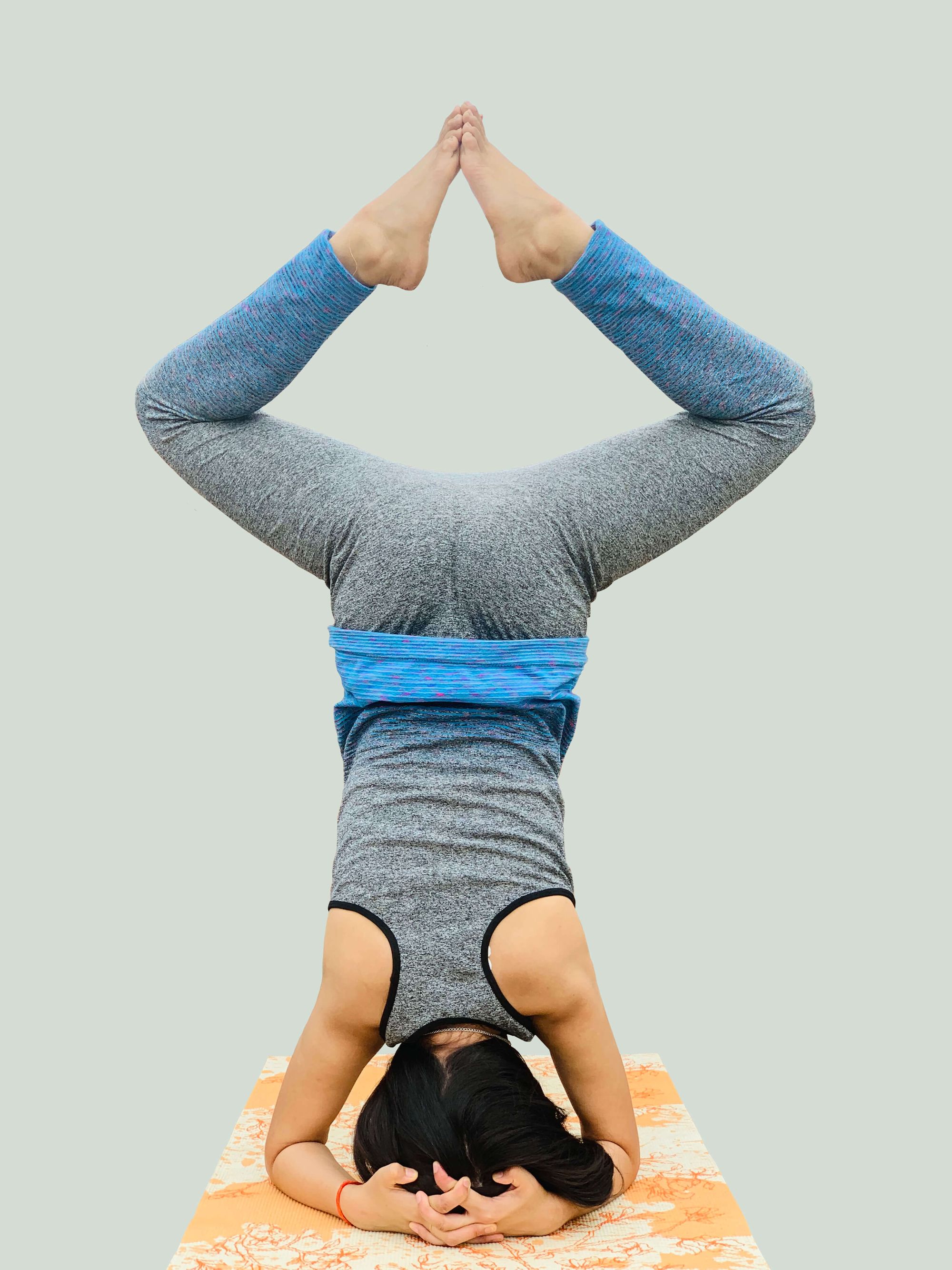
Headstand with Bow and Arrow Legs
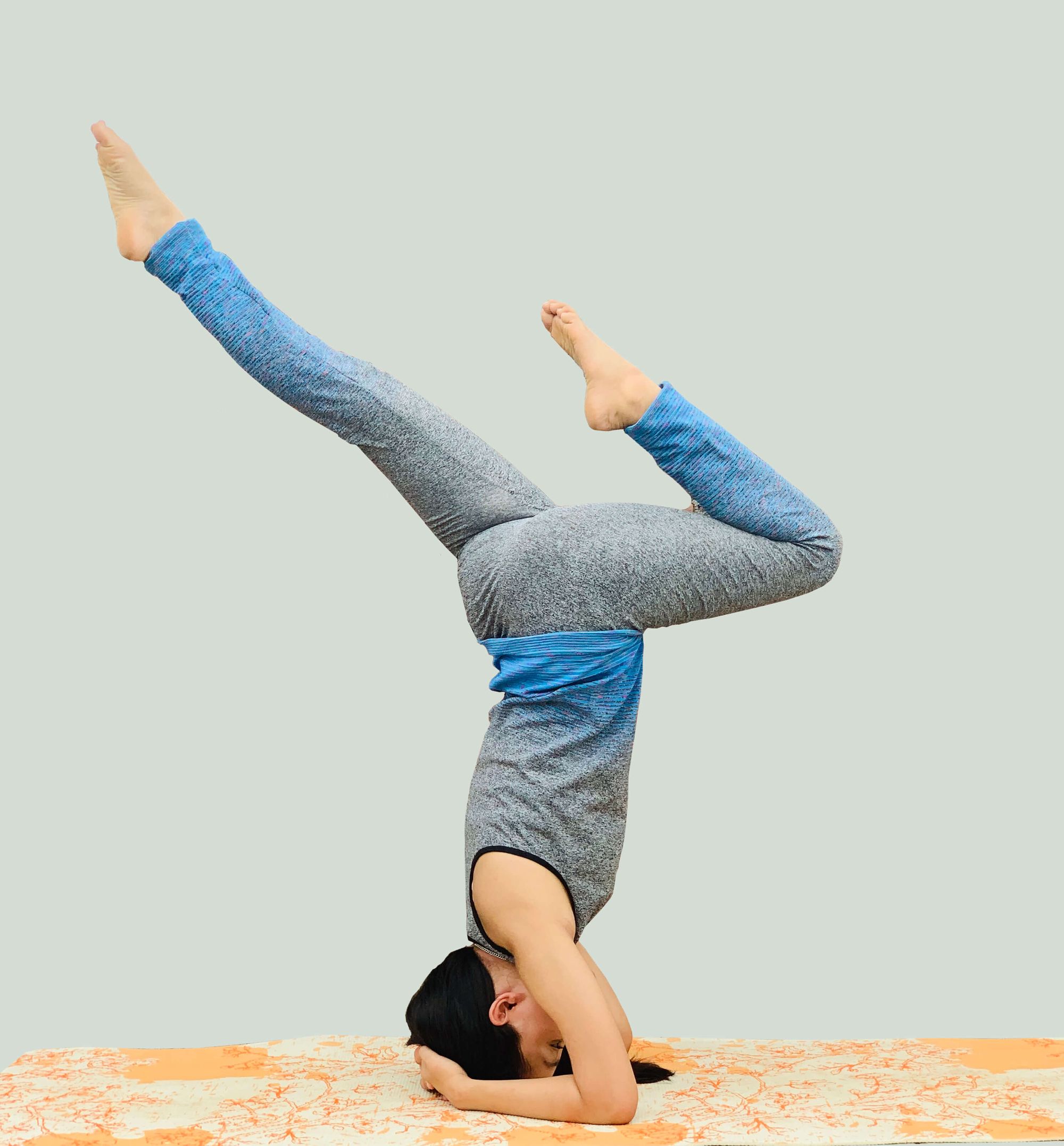
Headstand with Split Legs
